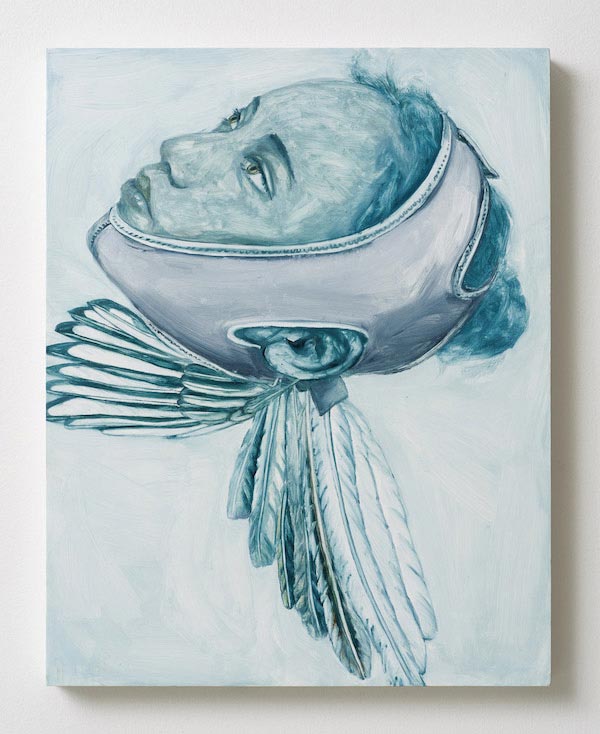
This exhibition deals with discrepancies between sensory input and the deciphering of reality. It is a collaboration between artist Ayelet Carmi and Dr. Ayelet McKyton, a neuroscientist whose research explores the limitations of re-learning to see after experiencing blindness. Her initial study, which was conducted in Ethiopia in collaboration with Prof. Ehud Zohary’s laboratory, measured and monitored children’s sight following cataract surgery. Dr. McKyton’s current research project is under the auspices of Dr. Netta Levin’s laboratory at Hadassah. She studies adults with a congenital sight-loss condition who have undergone innovative treatments to fix retinal dysfunction.
Dr. McKyton has discovered a critical period during development that our brains are capable of learning a particular way of interpreting sensory input. Once this window of opportunity closes it is difficult, if not impossible, to learn this skill.
Similar themes emerge from Ms. Carmi’s artwork; her drawings are a glimpse into the ambivalence that ensues when proper visual input is not, or cannot be, interpreted clearly. Using translucent parchment paper as her base, she draws layer after layer of imagery. Shapes emerge as three-dimensional representations, multiplicities of reality, in which elements and facts are repeatedly broken down and reassembled. The artist abandons tangible reality in favor of an alternative, imagined version. Taking this liberty, she enables the viewer to ponder reality while creating the world anew. Through Ms. Carmi’s artwork, the viewer actively sees and thinks about the world in a new light, as its physical reality lies before their very eyes.
Curator: Michal Mor
טופוגרפיה של ראייה
התערוכה עוסקת בהבדלים שבין התפיסה החושית לבין הפענוח של תפיסת המציאות, והיא פרי שיתוף פעולה בין האמנית אילת כרמי לבין חוקרת המוח, ד”ר איילת מקיטון. מחקריה של ד”ר מקיטון מבהירים את גבולות למידת הראייה לאחר עיוורון. ראשית מחקרה נערך באתיופיה, בשיתוף עם מעבדתו של פרופ’ אודי זהרי, אשר בדק את ראייתם של ילדים לאחר ניתוח להסרת קטרקט. מחקרה הנוכחי בהדסה, במעבדתה של פרופ’ נטע לוין, עוסק בבוגרים שנולדו עם פגם גנטי בראיה, וטופלו בהליך חדשני, שמביא לשיקום אזורים מסוימים במוח. החוקרת זיהתה כי קיימת תקופה קריטית בהתפתחות, בה נלמדת פרשנות מסוימת לקלט החושי במוח, שלאחריה קשה או בלתי אפשרי ללמוד אותה.

יצירותיה של האמנית אילת כרמי מתכתבות עם מחקריה של ד”ר מקיטון, ומהוות הצצה לתחושה האמביוולנטית הנוצרת עקב הפער בין קבלת קלט ראייתי תקין לבין פרשנות לא ברורה של אותו קלט. על גבי ניירות פרגמנט עכורים היא מייצרת שכבות של דימויים צבעוניים, המרכיבים צורות המתלכדות לעולם תלת ממדי. אלו מהווים מעין רשומון של מציאות בו אלמנטים ועדויות של המציאות מתפרקים ומורכבים מחדש. האמנית נוטשת את המציאות הממשית ומדמיינת אחרת תחתיה. בחירות זו, היא מאפשרת לצופים להרהר במציאות ולברוא עולם חדש. בעשייה האמנותית של כרמי נוצרת פעולה אקטיבית חדשה של ראייה ומחשבה אודות העולם הגשמי המונח לנגד ענינו.
רב השיח המדעי-אמנותי מתחיל בתופעות הפיזיקליות המתקיימות במוחם של הנחקרים, עובר דרך פענוח הממצאים על-ידי החוקרת ופירושם ביצירתה של האמנית, ומסתיים במוחו הקודח של הצופה.
אוצרת: מיכל מור
Photography: Youval Hai – יובל חי



